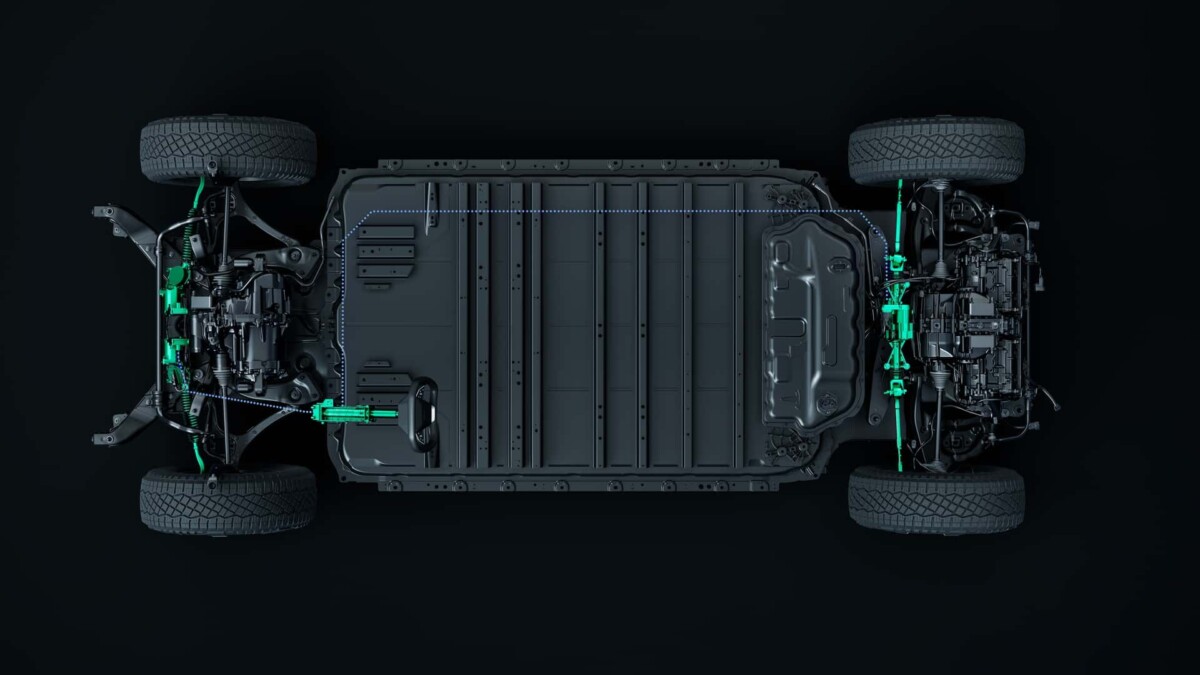More than autonomy, recharging and especially its power is an essential element of the electric car. Manufacturers are looking for the best solutions to recharge the batteries of their electric cars as quickly as possible, and certain technologies make it possible to achieve this.
Electric car batteries have internal architectures that can be very different. There are those divided into modules and those with a cell-to-pack structure, to give you the two most common examples. But in recent years, we have seen cars arrive with systems that could be described as “intermediate”. That is, they use “dual” or, if you prefer, “halved” batteries.
This is the case of the Tesla Cybertruck, for example, and the GMC Hummer EV, which have a similar structure for an identical objective: recharge as quickly as possible.
Are (big) American electric cars ahead?
Except in certain cases, electric car batteries operate at 400 volts. They are divided into two large connected modules, which thus make it possible to double the voltage and reach 800 volts. This is the case of the aforementioned Hummer EV, a model with a 400 volt architecture which, when connected to a particularly powerful charging station, is capable of supporting 800 volts by operating the two battery packs of which it has.
This allows the car to charge at up to 350 kW of peak power, a figure that allows it to gain around 150 km every 10 minutes. Not bad, but there is better.
Tesla's Cybertruck also has a similar battery called a “split pack”. For now there are not two modules, but four of 200 volts each. This means that when connected in series while charging, they can reach a voltage of 800 volts, allowing Elon Musk's electric pickup to charge up to 350 kW, especially if you connect it to a Supercharger V4.
However, if you recharge it with a Supercharger V3, which therefore delivers less power, the Cybertruck goes directly to 400 volts, connecting the batteries in series two by two to exploit the maximum output power of this type of charging station, at namely 250 kW.
What are the advantages for this type of architecture?
The serially connected module solution offers many advantages. The first concerns the absence of a DC-DC converter or any other device acting as a voltage modifier, since the modules are able to “adapt” to the terminals, automatically maximizing the charging power. And this absence also presents advantages in terms of costs and space.
They also make it possible to develop new versions of these cars with some ease. Tesla, for example, said it could introduce a Cybertruck with 1,000-volt architecture in the future, as the brand already does on the Tesla Semi. How ? Quite simply by simply adding a fifth module.
And the other manufacturers? It also happens, but on rather high-end models. The new electric Porsche Macan, for example, has a battery divided into two modules and an 800-volt architecture. The same goes for the recently introduced Audi Q6 e-tron, which shares the same platform as the Macan.
Ford, for its part, has also filed a patent for electric vehicles operating on 800 volts with a battery pack divided into different modules as well.

